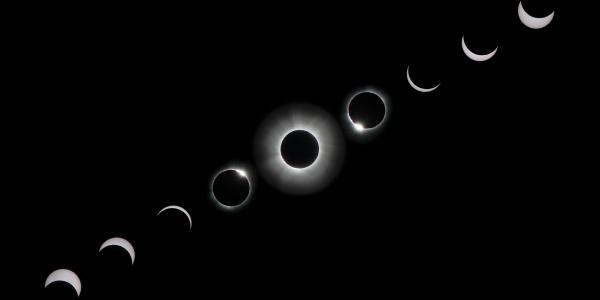Saturday Science Lecture with Jim Buckley on Cosmic Coincidence: The Science of Eclipses
Through a remarkable set of circumstances involving collisions on a cosmic scale, the Earth was left with a single large moon. And by a cosmic coincidence, the angular size of the Moon and Sun on the sky are almost the exactly the same, leading to total or annular eclipses. In these events, the moon blocks the bright solar disk revealing the structure of the outer part of the sun, the solar corona. This brief view of stars around the sun even allowed the first measurements of the deflection of starlight by the sun’s gravity; a first validation of Einstein’s theory of general relativity. Throughout human history, the emotional impact of these events ensured that careful historical records were kept of the location and time of eclipses, providing a precise measurement of the slowing spin of the Earth and the sad retreat of the moon from the Earth. In ancient Greece both solar and lunar eclipses played a critical role in determining the curvature of the Earth the and scale of the solar system. So important was the ability to predict eclipses that precise clockwork mechanisms were developed to predict eclipses leading to advances in both technology and fundamental science. In this talk I’ll begin with an explanation of solar eclipses then move on to a brief survey of some of the myriad ways in which the shadows cast by eclipses have actually cast light on our understanding of the universe.

